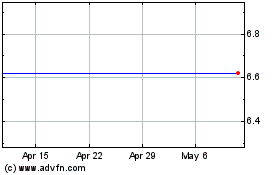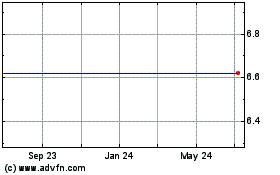India is finalizing an overhaul of its telecommunications
policies to address criticism that regulations are wrecking one of
the nation's hottest industries by fostering price wars, degrading
service quality and blocking much-needed consolidation.
Kapil Sibal, India's minister of communications and information
technology, said in an interview that the new policies, which will
be in place by September, will relax restrictions that have
prevented mergers and will aim to consolidate the wireless industry
to only six carriers per market within India, down from 12 or 13 in
many markets now. He also promised to free up radio spectrum, the
airwaves that carry wireless signals, and allow companies to share
spectrum.
India's cellphone rates have plunged in the past several years
in a hypercompetitive environment. Averaging about seven-tenths of
a U.S. cent per minute, the rates are among the world's lowest.
That has helped to bring mobile phones to the masses and turn India
into the world's second-largest wireless market, after China, with
more than 800 million subscribers.
The industry's rapid growth over the past decade is frequently
cited as one of modern India's greatest success stories and has
attracted billions in foreign investment.
But the setup has battered cellphone companies, whose revenue
and earnings have declined sharply. Average revenue per user per
month at Bharti Airtel Ltd., the nation's largest wireless carrier,
dropped to just over $4 in the quarter ended March 31 from about
$10 four years ago. Other carriers have reported similar drops.
Carriers have pulled back on capital investment, which dropped
42% from 2008 to 2010 to $7.2 billion, according to Prashant
Singhal, head of the India telecom practice at consulting firm
Ernst and Young. That has raised fears that operators aren't
nurturing their networks for the next phase of telecom development,
the rollout of wireless Internet services. While India is in the
early stages of introducing such third-generation services, the
U.S. and many other developed markets are upgrading to 4G.
The government's new rules will go a long way toward determining
whether India's telecom revolution sparks anew or fizzles over the
next few years.
Mr. Sibal, a Harvard-trained lawyer who was appointed telecom
minister in November when his predecessor resigned amid a
corruption scandal, is trying to strike a balance in the telecom
rules. Current call rates are unsustainable, he said, but the new
policies must not put telecom services out of reach of India's
poor.
"Ultimately, technology is meant to serve a public purpose, so
that objective cannot be lost," Mr. Sibal said. "At the same time,
the operator must get a return on his investment that is
attractive, and the industry must prosper."
Telecom firms complain that strict merger rules, such as a
stipulation that a carrier can't have more than 40% of the revenue
or subscribers in any market, have headed off deals between midsize
and large carriers and left the industry with far too many players,
fueling price wars.
Operators also say they are desperate for the government to make
more airwaves available. A sluggish bureaucracy and the reluctance
of government ministries to give up airwaves have meant that Indian
carriers have a small fraction of the spectrum that their
counterparts have in the U.S. and Europe.
"There is an artificial scarcity of spectrum in India, which is
holding back Indians from getting world class telecom service,"
said Nick Read, chief executive for Africa, the Mideast and Asia
Pacific for Vodafone Group PLC, a major player in India.
Kunal Bajaj, a telecom consultant with Analysys Mason in New
Delhi, estimated that under current levels of spectrum, carriers
will be able to provide reliable broadband service to only 117
million users in 2015, even though there will be demand for a
further 65 million connections.The amount of lost potential revenue
to the industry would be equivalent to 0.7% of gross domestic
product, he said.
Mr. Sibal said the government will move swiftly to sell more
spectrum through a "market-based" mechanism that will ensure that
prices are fair to carriers. He said the sale wouldn't necessarily
be through an auction but wasn't more specific. Prices skyrocketed
in last year's 3G auction, forcing companies to shell out several
billion dollars apiece to cover just a portion of the country. "The
big companies who have deep pockets only want an auction because
they can snuff out everybody else," Mr. Sibal said.
In a shift, operators that aren't using all of their spectrum
also will be allowed to rent portions to other companies, who could
then offer wireless service. A common practice in many developed
markets, including the U.S., this would put spectrum to more
efficient use, Mr. Sibal said. "We want the regime to be far more
flexible than it's ever been before," he said.
Still, there will be some major constraints. Mr. Sibal said
companies will have to pay a one-time fee for any spectrum they
hold over a specified limit, a move big carriers like Vodafone and
Airtel oppose because it could cost them billions of dollars.
Mr. Sibal said spectrum availability and the number of players
in the market also could be affected by a lawsuit that alleges that
the government sale of 2G frequencies in 2008 was corrupt. The
case, which is being heard by the Supreme Court, could result in
some companies having their licenses revoked or having to return
spectrum to the government.
Shifting and unpredictable regulations have put further stress
on operators. After several companies finalized offerings of video
calling on their nascent 3G networks late last year, the government
said they would need a special security clearance.
"You can't launch a service and then be told after the fact that
you need some new permission," said Srinivasa Addepalli, senior
vice president for corporate strategy at Tata Communications Ltd.
"It leads to uncertainty in the market and a waste of
resources."
Regardless of what regulators do, Mr. Sibal said, operators and
their investors shouldn't be concerned about a meltdown. "India is
a market that cannot be snuffed out. There's no way in the world
that will happen."
Capital Lodging (NYSE:TCL)
Historical Stock Chart
From Mar 2024 to Apr 2024

Capital Lodging (NYSE:TCL)
Historical Stock Chart
From Apr 2023 to Apr 2024
